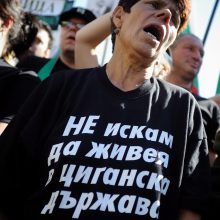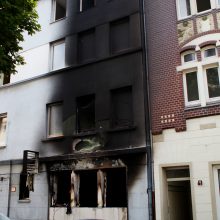and the long struggle for recognition
of the Sinti and Roma and the
long struggle for recognition
Antigypsyism gains ground
With a total population of ten to twelve million, the Sinti and Roma now represent the largest minority in Europe. Many are exposed not just to discrimination, but also to openly racist violence in their everyday lives. Minority rights often exist only on paper. The public perception and media coverage are overlaid with prejudice. The term ‘antigypsyism’ has now gained currency for describing this form of racism directed specifically at Sinti and Roma.
With the strengthening of nationalist and populist movements, the Roma in eastern and south-eastern Europe in particular are faced with growing antigypsyism that is rooted deep in the core of society. The minority serves as a scapegoat for social upheaval, not least in the wake of the economic and financial crisis.






